35mm
-
Striking Film Prints in a Digital World: Laser Printing, CRT Screens and a One-Stop Film Recorder from Norway
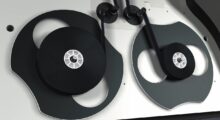
In 2006, Rune Bjerkestrand was on the Universal lot in Hollywood, far away from his home country of Norway. His brand-new invention, the Cinevator, could create a film negative from a digital file in real time—a vast improvement over other recorders that could take 10 days or more to craft a negative for a 90-minute film. But was the quality there? Technicolor set up a blind test to find out. “We didn’t really have a clue about film, about film technology, about the film industry, about film machines—nothing,” Bjerkestrand says. After the split-screen test footage ran, everyone in the theater […]
by Caleb Hammond on Dec 16, 2024 -
The 29 Features Shot, In Whole or In Part, on 35mm in U.S. Release Year 2023
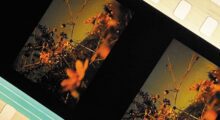
During the NBA playoffs this year, a Miller Lite commercial unexpectedly compelled my attention. The frames’ edges were rounded, the images’ scratches conspicuous—this was either shot on film or trying very hard to look like it. Further digging confirmed the spot (title: “You Never Forget”) was shot on 35mm, perhaps in keeping with its nostalgic world of bars with CD jukeboxes and cathode-ray TVs. I’d often read over the past decade that commercials and music videos have been using celluloid with increasing frequency; collating this year’s (tenth!) annual edition of U.S.-released features shot in whole or part on 35mm [2014, […]
by Vadim Rizov on Dec 15, 2023 -
The 24 Features of 2022 Shot on 35mm
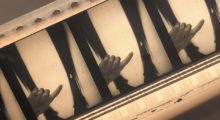
The main poster for Steven Spielberg’s The Fabelmans displays its characters within the frames on three strips of celluloid: young Steven Spielberg stand-in Sammy Fabelman (Gabriel LaBelle) holding a 16mm camera, mom Mitzi (Michelle Williams) dancing in car headlights, etc. This makes sense for the “childhood of a 1970s filmmaker” plot, and it tracks technically as well. Like every Spielberg feature—save the digital-world portions of Ready Player One, the CG of The BFG and the mocap experiment of The Adventures of Tintin—The Fabelmans is shot on 35mm. But look closely and this key art doesn’t make any sense: The vertical […]
by Vadim Rizov on Dec 15, 2022 -
Positive Endeavor: CPC London on Striking Affordable 35mm Prints
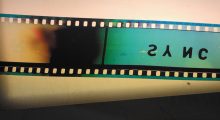
In February 2020, I attended a screening of Josh and Benny Safdie’s Uncut Gems at Quentin Tarantino’s New Beverly Cinema, a venue widely known and admired among film enthusiasts for its devotion to celluloid exhibition. I was awestruck by the exquisite 35mm presentation of a movie I had previously—like everyone else in the world—only seen projected digitally, and even more astonished when I spoke with the Safdie brothers afterward and learned how simple it was for them to strike a flawless 35mm print from their digital source. Back in 2005, when I directed Bad Reputation, a microbudget horror movie shot […]
by Jim Hemphill on Jan 18, 2022 -
The (Approximately) 30 Movies of 2021 Shot on 35mm
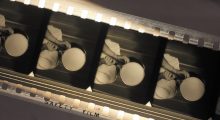
As I began, for the eighth year in a row (!), to research the year’s U.S. releases shot in 35mm1, the two movie events I was personally anticipating didn’t primarily revolve around that format. One was Anthology Film Archives’s pandemic-delayed retrospective of Canadian experimental filmmaker, multihyphenate artist and all-round hero Michael Snow—initially scheduled for March 2020, finally screened in December and finished just before Omicron started surging around me. Most of his films were shot and shown on 16mm, making the few 35mm inclusions startling for their comparative, immediately perceptible sharpness and sheer volume. I went all in, taking a […]
by Vadim Rizov on Jan 18, 2022 -
The 25 or So 2020 Features Shot on 35mm
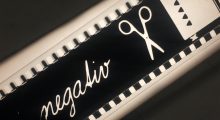
Since 2015, I’ve annually rounded up interviews and features covering the previous year’s U.S. theatrical releases shot on 35mm, an inherently melancholy collation of (increasingly dead) links. (“This is your most quixotic project,” a friend messaged recently.) The 25-ish 35mm releases of 2020 I’ve tallied this time are in line with each previous year’s 30-or-bubbling-under features, a boutique fraction of the larger landscape. Each list builds toward a larger index of minor deaths. My first edition, covering 2014, noted the close of Australia’s last commercial film lab and Bong Joon-ho’s return home to South Korea after Snowpiercer, only to discover […]
by Vadim Rizov on Apr 8, 2021 -
The Mankalorian: Two Approaches to Digitally Captured 35mm Looks
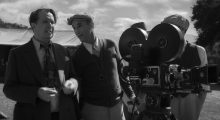
The last time I wrote about film color for this magazine was on the ways 35mm shooting and digital color combined in Uncut Gems and Star Wars: The Rise of Skywalker to create contemporary looks strongly engaged with the past, resulting in what we might call a look “more filmic than film.” David Fincher’s Mank, along with a second season of the Star Wars TV series The Mandalorian, gives us an opportunity to consider how digital and celluloid tendencies combine from the opposite direction—both were shot digitally, then graded to explicitly evoke celluloid. Once again, color grading and capture format […]
by Jessica Dunn Rovinelli on Dec 9, 2020 -
“My Production Costs the Same as a Digital Film”: Philippe Garrel on The Salt of Tears

Philippe Garrel is in recognisably a “late” stage of his career as a filmmaker. He has moved past the point of going for broke. His characters, avatars for any given idea he may be preoccupied with, border on the archetypal. The settings are stripped down, reduced to their essence. His concerns, by this stage, are variations on a few basic themes. He is a commanding narrative presence, the authorial space in which he is most free to assert himself idiosyncratically. With all this in mind, viewers’ mileage may vary. Those of us who take pleasure in the relaxed vibes of […]
by Christopher Small on Sep 22, 2020 -
“The Directors I Work With Prefer a Natural Approach”: DP Diego García at Rotterdam 2020

Because of the nature of the business, a cinematographer often has a more eclectic body of work than an actor or a director, and it is not unusual to see their work span continents. Even by these standards, however, Diego García’s filmography is quite impressive: His last four credits are Carlos Reygadas’s Our Time, Gabriel Mascaro’s Divine Love, Nicolas Winding Refn’s Too Old to Die Young, and Yorgos Lanthimos’s short film Nimic—four films produced in four different countries by directors with four different mother tongues. It isn’t surprising, then, to hear that García is particularly attentive to a director’s body of […]
by Forrest Cardamenis on Mar 3, 2020 -
Black and Blue: The 35mm Colors of Uncut Gems and Star Wars
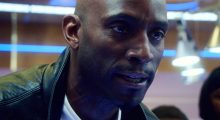
Fall 2019 provided us with a massively budgeted 35mm feature in the form of J.J. Abrams’s The Rise of Skywalker (shot by Dan Mindel and colored by Stefan Sonnenfeld at finishing house Company 3) and a surprisingly visible A24 mid-budget art film in the Safdie brothers’s Uncut Gems (shot by Darius Khondji and colored by Damien van der Cruyssen at The Mill). In each case, the choice to shoot on celluloid was rooted in what could be termed (charitably) as a nod to film history or (uncharitably) a nostalgic gesture. I make no claims as to which it is, nor […]
by Jessica Dunn Rovinelli on Jan 23, 2020
